Family variety
This is a large family with hundreds of species. Appearances and behaviour can vary greatly across the family. Lionfish are sometimes known as the Turkeyfish due to their long feather-like fins, as well as the Firefish and the Devilfish.
Size
The smallest family member is just 5cm long, while the largest is the Stonefish (Synanceia verrucosa) that has been known to grow to 50cm.
Behaviour
Scorpionfish are ambush predators and are usually seen lying camouflaged on the reef or sea floor waiting for a meal to swim by. They usually hunt alone but, during seasonal abundances they can be seen in close proximity to each other.
Lionfish are often found under overhangs and tucked in holes while resting. They often hover gracefully above the reef when hunting, displaying their beautiful fins to their full extent.
Distribution
Scorpionfish and Lionfish can in found in all tropical waters. In some areas they are quite rare with only one or two species, but in many others they are very common, with more than 20 species possible on a reef.
Habitat
Members of this family are mostly reef dwellers. Scorpionfish tend to spend much of their time on the reef itself, while Lionfish either sit on the reef or hover above it.
Diet
Scorpionfish and Lionfish feed by creating a vacuum in their mouths and sucking in their prey. They eat a diet of small fish and crustaceans and can attack at lightning speed.
Reproduction
For most species the female is fertilised internally by the male. Sshe then releases a mass of pre-fertilised eggs attached to a buoyant float which then floats in surface waters until they hatch and settle.
Defences
All members of this family have very effective defences as their dorsal spines have enough poison to bring on instant paralysis. Many Scorpionfish have brightly coloured pectoral fins that they flash at possible predators, warning them of their venom. When not wishing to draw attention to themsleves, their fins can be tucked away so as not to ruin their camouflage. As a first line of defence, Scorpionfish rely on their amazing camouflage to escape predators, while Lionfish tend to use their intimidating fins as protection.
Threats
Reef Scorpionfish and Lionfish are not widely fished, mainly due to their powerful venom. Many species - especially Lionfish and some of the rarer scorpionfish - are higly prized in the aquarium trade. As it is impossible to breed them in captivity all individuals must be captured from the wild, putting pressure on wild populations in certain areas.
Did You Know?
The Reef Stonefish (Synanceia verrucosa) is the most venomous fish in the world. The venom in their dorsal spines is toxic enough to kill a human being if medical treatment is not sought.
Luckily this highly poisonous fish only uses its lethal weapon in self-defence, so you are unlikely to get stung unless you sit or stand on one.
Intro
Although Lionfish and Scorpionfish may appear very different at first glance, they are actually very closely related.
Both are predators equipped with toxic venom in their dorsal spines, both have a similar body shape and their features are not dissimilar.
Scorpionfish sit perfectly camouflaged on the reef waiting for prey to swim past while their flamboyant.long-finned cousins the Lionfish hover over the reef, boldly displaying their elegant plumes.
Popular species 1
Common Lionfish
(Pterois volatans)
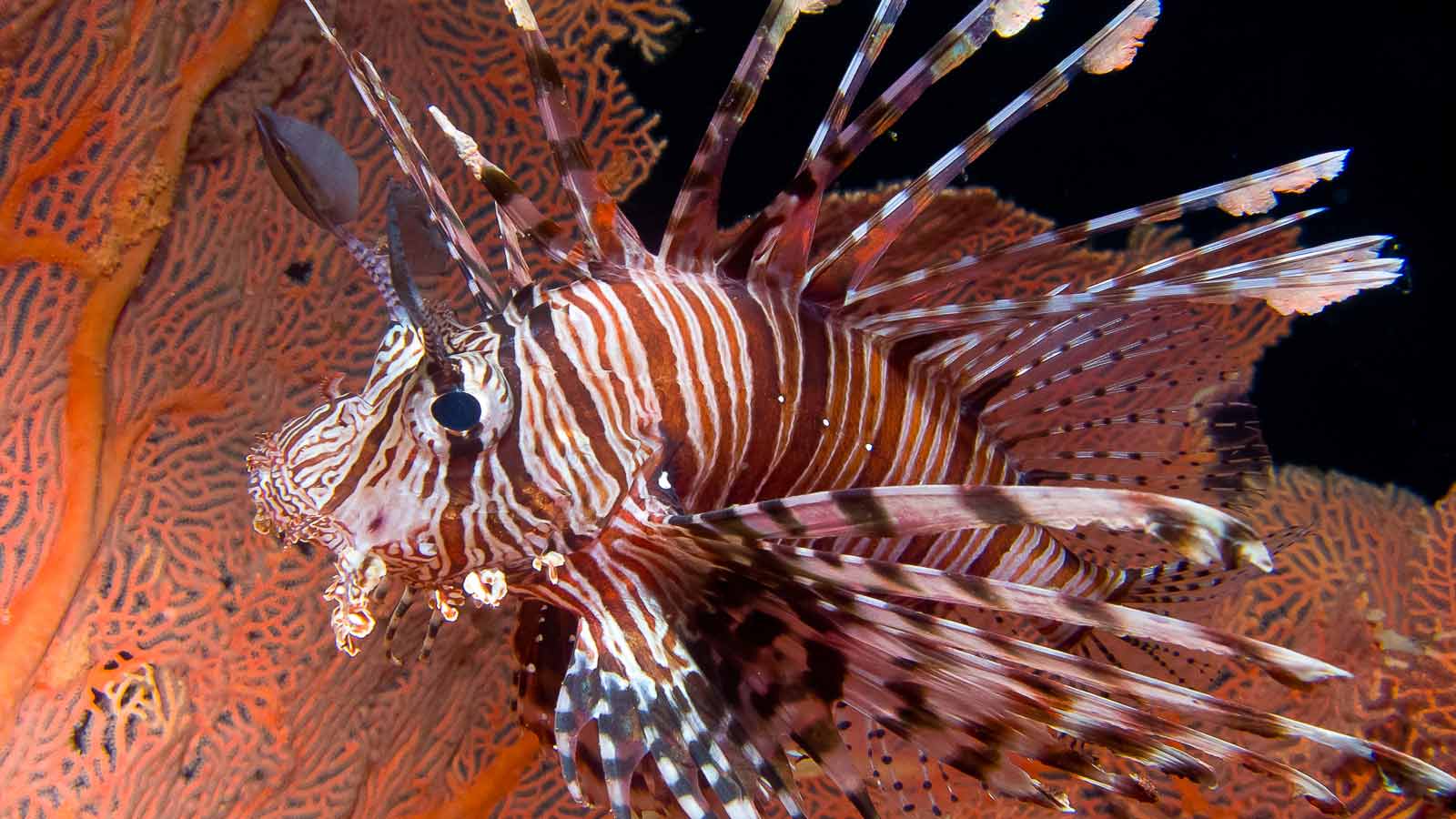
A larger lionfish, growing up to 40cm in length. Often seen hovering above the reef stalking prey. These lionfish can be very aggressive over their hunting territory. Juveniles are quite dark with almost translucent fins that bend in the current.
Popular species 2
Bearded Scorpionfish
(Scorpaenopsis oxycephala)
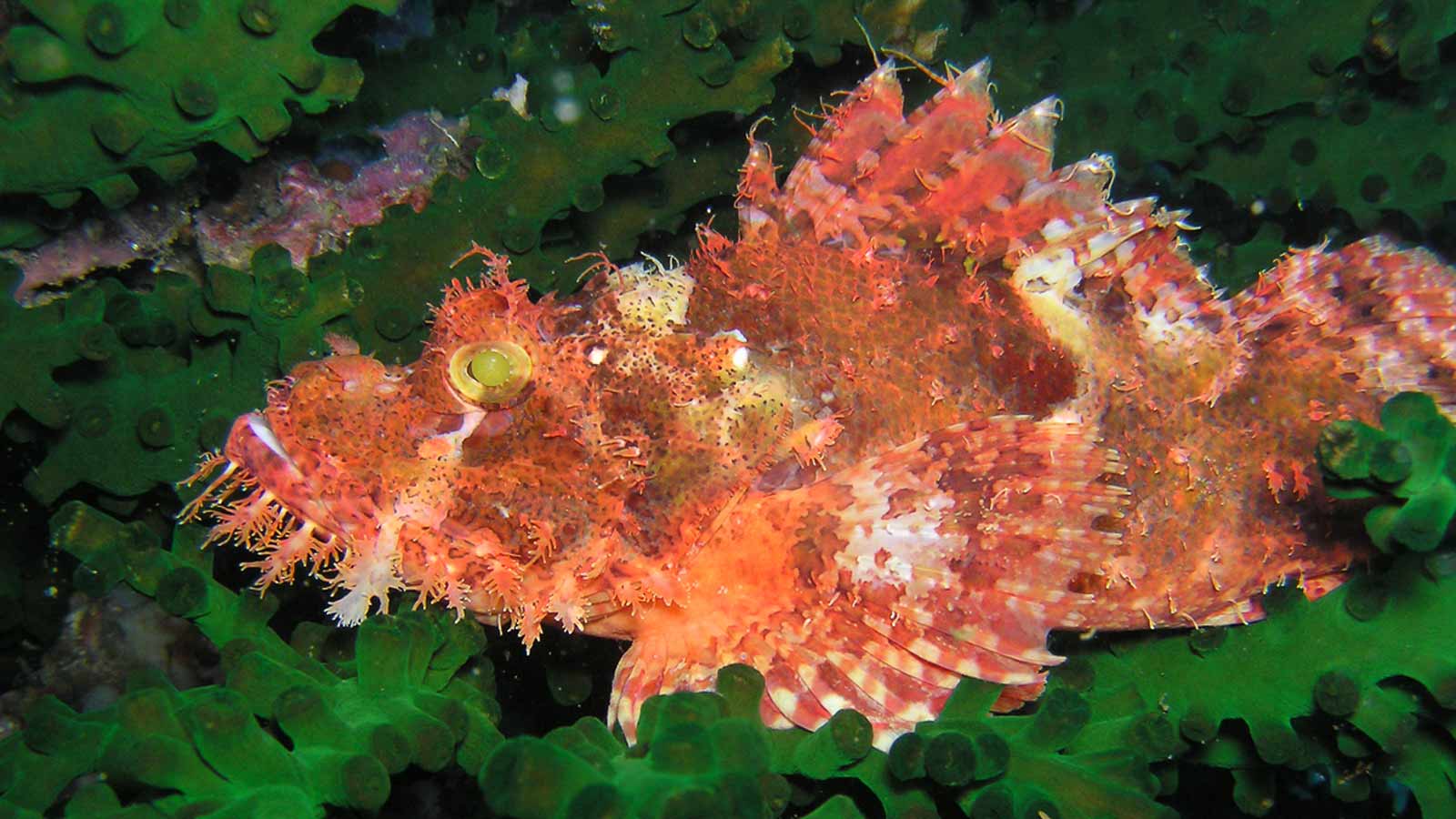
A very variable species whose colour can range from pale grey or white to dark red. Adults can measure up to 36cm. Completely covered in tassels, these fish blend into their backgrounds perfectly and are usually found lying hidden on the reef or sea bottom waiting for suitable prey. Can be locally common.
Popular species 3
Lacy Scorpionfish
(Rhinopias aphanes)
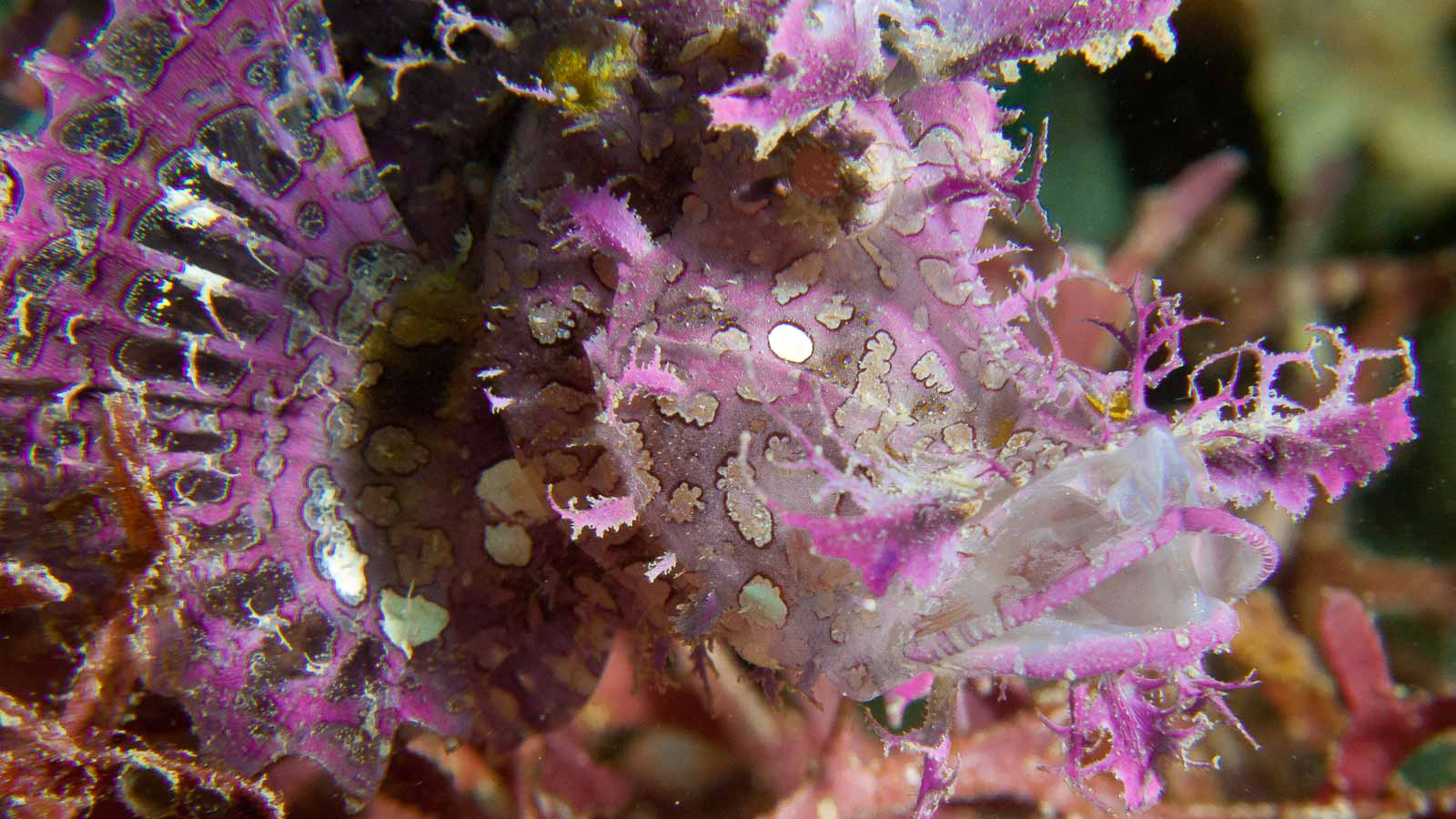
This amazingly camouflaged fish can be plain or covered in dark outlined spots. Variable shades from lilac, to yellow and red. Like the Weedy Scorpionfish, he is much sought after by divers, especially underwater photographers.
Popular species
Here are some of the Scorpionfish and Lionfish species you might come across on your next dive.
FACTFILE
 SPECIES: 222
SPECIES: 222
 SIZE RANGE: 5-50 cm
SIZE RANGE: 5-50 cm
 DISTRIBUTION:
DISTRIBUTION:
Global. Widespread throughout region.
 HABITAT:
HABITAT:
Members of this family are mostly reef dwellers.
 THREATS:
THREATS:
Many species are highly prized in the aquarium trade. It is impossible to breed them in captivity so all individuals are captured from the wild.
Identification tips
-
Scorpionfish and lionfish are relatively large, tassled heads with big protruding eyes and large, expandable mouths.
-
Rounded chunky bodies, flattened on the underside.
-
Lionfish in particular have prominent spines tipped with a poisonous toxin.
-
Pectoral fins of some species of Scorpionfish are brightly coloured to warn of their toxicity.
-
Scorpionfish are often covered in tassels or warts to add to their camouflage.
-
Some Scorpionfish use their pectoral fins in a modified walking movement to get around.
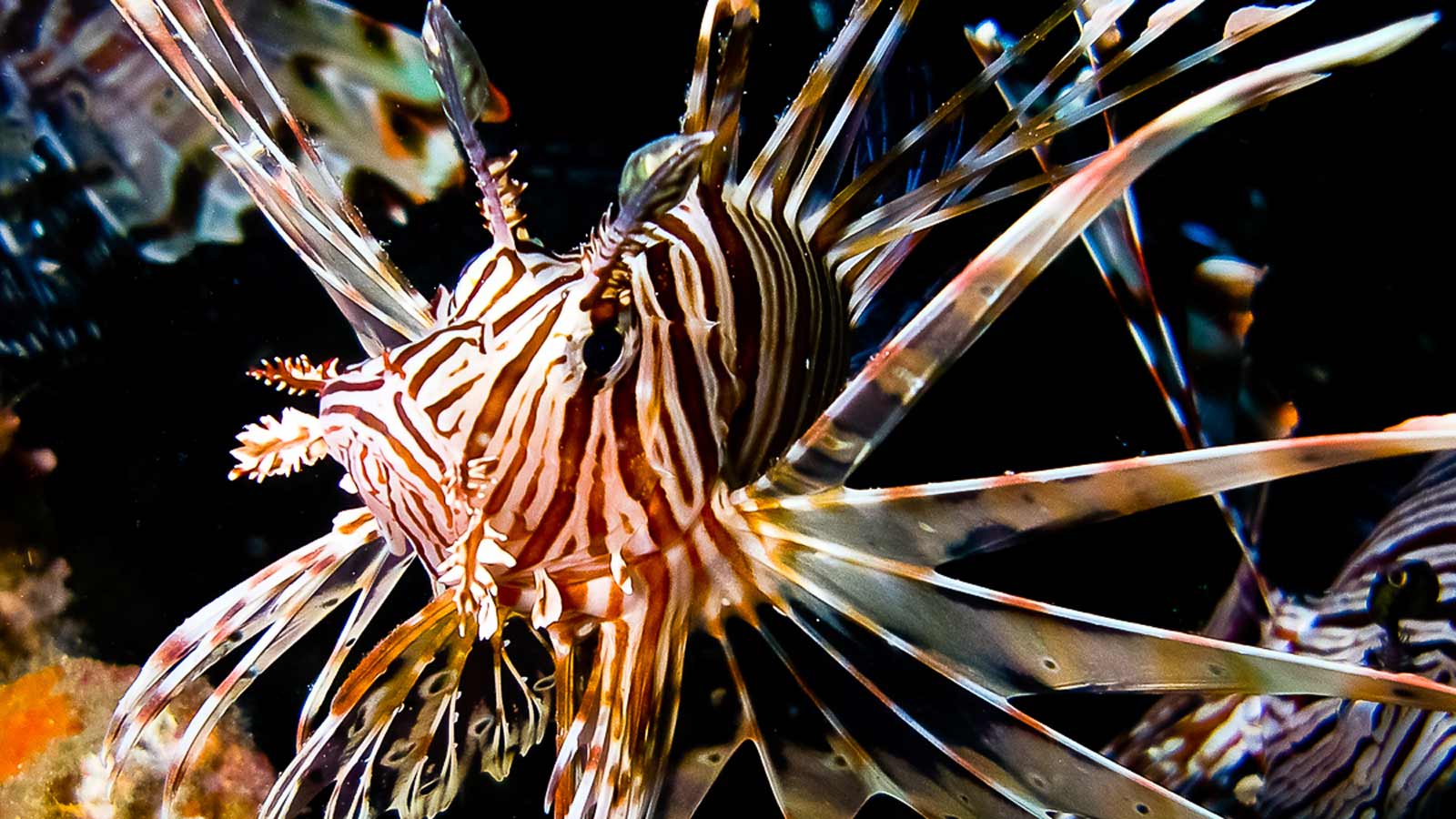
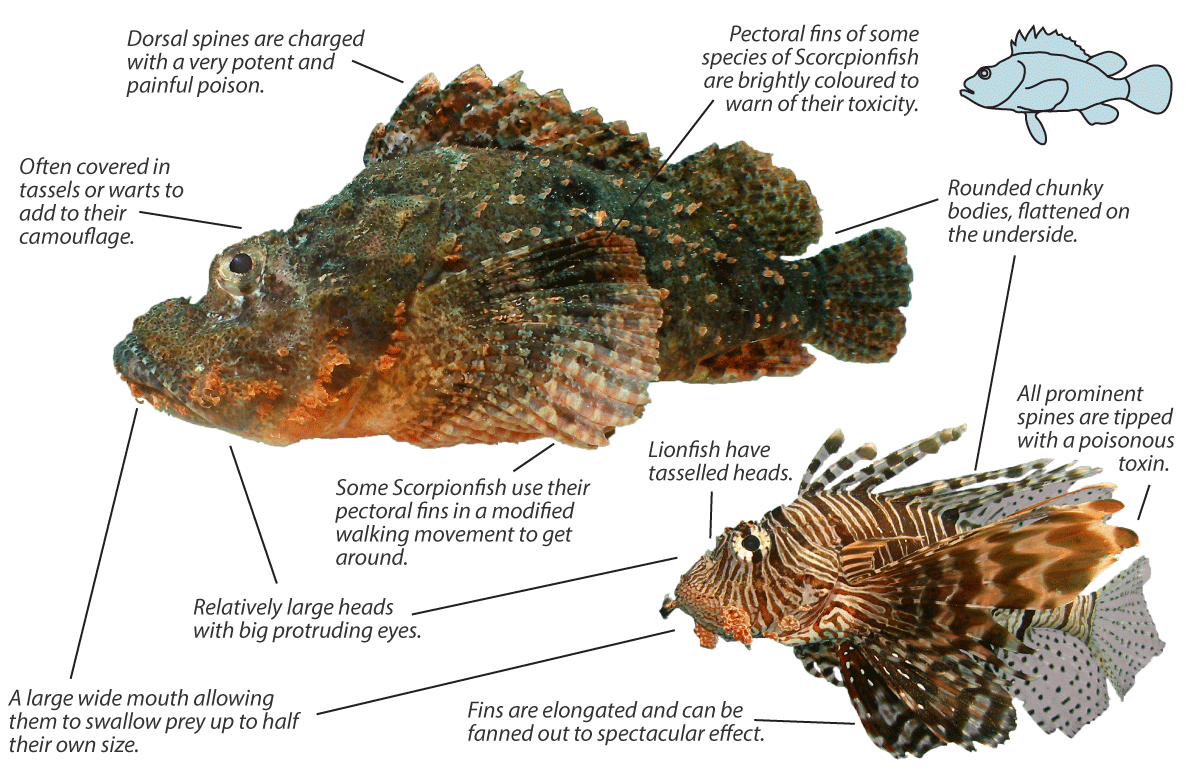



SPECIES: 222
SIZE RANGE: 5-50 cm
DISTRIBUTION:
HABITAT:
THREATS: